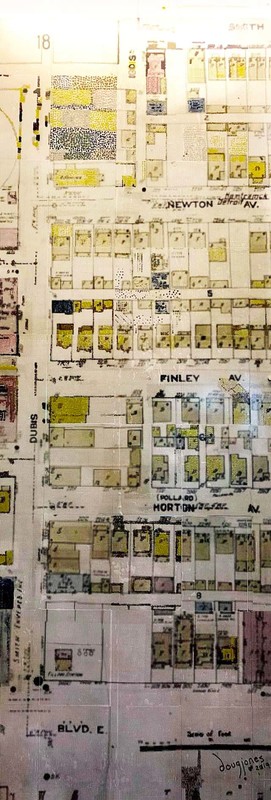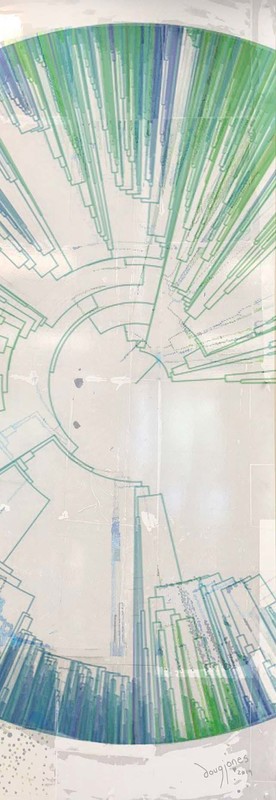Hilye: Artistic interpretations of the Prophet Muhammad
Demonstrating the collaborative stewardship of artifacts/assets across space and time, this artwork is inspired by hilye (written depiction of the Prophet) executed by Hafız Osman Efendi (d.1698), who developed this graphic form. It was mounted and decorated at a later date, likely in the 18th and 19th centuries. This artwork further embellishes the original works by including design interpretation by artist Doug Jones.
The image above features four distinct rectangular panels of Arabic script calligraphy and illumination, set one above the other. The uppermost panel features a depiction of the Great Mosque at Mecca set in a white semi-circle bordered in swirling floral designs. The background is cream with beige frame. The next panel carries a broad line of large calligraphic script above a square with large central circle filled with smaller lines of script and four circles at the corners each with large script. The next panel is filled with white floral designs against a blue field. The lowermost panel features another broad line of large script above narrower lines of smaller script flanked by additional white on blue floral designs.
This piece was painted by members of the Muslim Student Association as part of this project.
You can find information about the original inspiration for this piece in the University Michigan Library catalog and view the original inspiration in person by visiting the University of Michigan Library Special Collections Research Center.

Sanborn Maps: Early Wayfinding through Mapping

Dr. Stephen Smith’s ‘Circle of Life’/’Tree of Life’ abstract visualization: Data visualization of biological diversity

